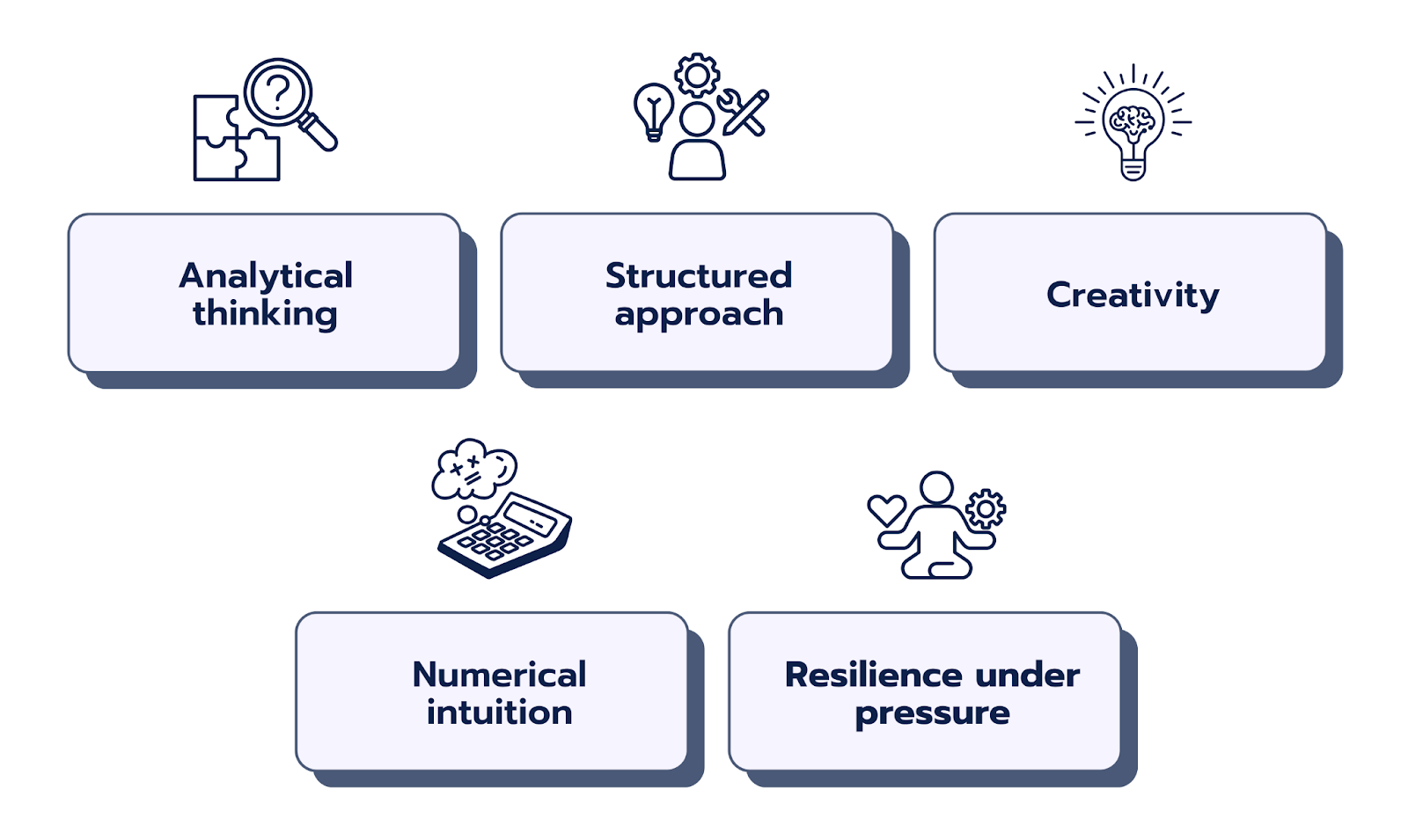You’ve probably heard of brainteasers before. These are tricky logic puzzles that sometimes come up in finance interviews. And maybe you’ve asked yourself, “Why are they making me solve riddles when this is supposed to be about numbers, markets, and strategy?” That’s exactly what we’re going to explore. We’ll take a closer look at what brainteasers are, why interviewers use them, and how you can approach them with confidence.
Brainteaser
What Exactly Are Brainteasers?
Brainteasers are short logic puzzles designed to push you out of your usual way of thinking – in the best possible way. While they don’t come up in every finance interview, it’s definitely worth being prepared.
The goal isn’t to test your industry knowledge or technical expertise. Instead, interviewers want to see how you break down a problem, think logically, and communicate your approach clearly. Some brainteasers are based on everyday situations, while others may seem unusual or even a little absurd at first glance.
Here’s an example from our brainteaser collection:
A bouquet contains three times as many white flowers as blue ones. There are eight more pink flowers than blue ones, and four fewer purple flowers than pink ones. There are nine purple flowers. How many white flowers are there? 💐
👉 Once you get the hang of it, brainteasers can actually be a lot of fun. By the way, we’ve got over 300 different ones waiting for you to solve!
Why Do Interviewers Use Brainteasers?
Brainteasers aren’t random or just there to waste time. Interviewers use them intentionally to see how you think, especially under pressure. Sure, the finance industry revolves around facts, numbers, and analysis. But soft skills are just as important, and brainteasers are a great way to showcase them.
Think of a brainteaser as a window into your thought process. It reveals how well you stay calm and focused when things get tricky. That’s exactly why some interviewers choose to include them.
What Skills Do Brainteasers Test?
No matter how strange a question may seem, there’s always a purpose behind it. Interviewers use brainteasers to assess whether you bring key competencies to the table. Skills that aren’t just helpful in the interview, but essential in the day-to-day work of the finance industry. They want to see how you think, how you approach problems, and whether you can stay structured even when you don’t have an immediate answer.
Let's take a closer look at the core skills interviewers are typically looking for:

- Analytical thinking: Can you break down a complex problem into logical, manageable steps?
- Structured approach: Do you work in a clear, organized, and easy-to-follow way?
- Creativity: Are you able to think flexibly and come up with unconventional but sound solutions?
- Numerical intuition: Can you make rough estimates, judge realistically, and explain your reasoning clearly?
- Resilience under pressure: Do you stay calm and solution-oriented even when the perfect answer isn’t obvious?
How To Solve a Brainteaser
Brainteasers may seem like quirky little puzzles at first, but with the right approach, they’re absolutely manageable. It’s not about finding the perfect answer right away. What really matters is how clearly and calmly you explain your thought process to the interviewer.
Keep the following tips in mind to tackle any brainteaser!
Structure first, solution second: Before jumping into calculations, take a moment to understand the question. What exactly is being asked? What information do you have, and what can you logically add? Think out loud, explain your steps clearly, and go one step at a time.
Try the brute-force method: Sometimes trial and error is your best bet. If the question asks for a specific number and there are only a few possible options, it’s totally fine to test them systematically. Just make sure to explain what you're doing and why.
Think logically, not instinctively: Even if a puzzle seems confusing at first, the solution is often simpler than it appears. Logical reasoning is key. If you see multiple ways to solve it, talk through them and explain why you choose a certain approach.
Write things down: You’re not expected to do everything in your head. Use pen and paper or a whiteboard to jot down your steps and keep track of your thinking.
Stay open, don’t freeze up: If you get stuck, that’s completely fine. Just be transparent about what you've thought so far and what you would consider next. This shows you’re flexible and able to keep moving forward rather than getting stuck.
Brainteasers are all about practice. The more puzzles you try, the faster you’ll recognize patterns and build your own go-to methods. Over time, you’ll not only become quicker, but also much more confident in handling unexpected questions.
Key Takeaways
Brainteasers might not show up in every finance interview, but they’re a great way to sharpen your thinking. They help you develop creative and structured problem-solving skills, build resilience under pressure, and strengthen your numerical and logical reasoning.
The most important thing is to focus on your approach. A well-explained thought process often matters more than finding the “perfect” answer.